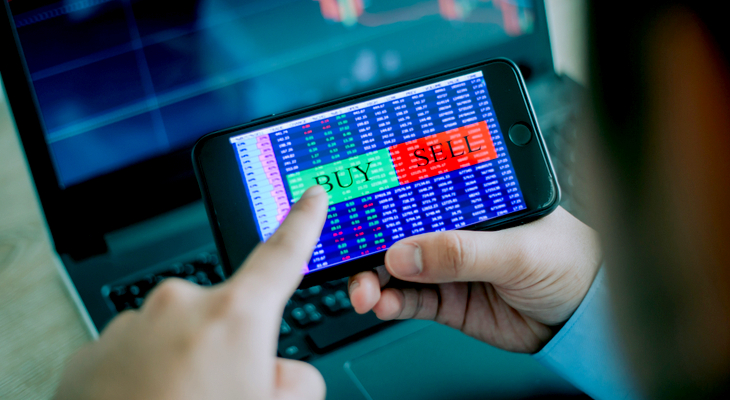The trading environment has become increasingly complex and dynamic in recent decades, providing investors and traders with many innovative approaches and strategies. Additionally, the trading landscape grew considerably friendlier to newcomers and rookie traders. Thanks to online forums, brokerage firms, and digital exchange platforms, even beginner traders may start investing activities in a matter of weeks.
But despite increased accessibility and digital assistance, there are still many fundamental concepts that one has to understand to become a skilled trader. Buying power is one of these key concepts, allowing traders to control their leverage and trading capacity without incurring unnecessary risks.
Contents
What Is Buying Power In Trading?
One key indicator of an investor’s trading potential is their buying power. One way to conceptualise Trader’s buying power would be the $10,000 they could use to purchase stocks or other assets while the market is open. The $10,000 total purchases that Trader X can make within a certain period.
Thus, a trader’s potential ability to carry out trading strategies on the open floor is called buying power. Comprehending your buying power is essential for formulating practical trading tactics and optimising your investment assets.

Source: sofi.com
Margin Accounts And Cash Accounts
As was noted, a trader’s buying power is the most they can purchase in a specific period, usually a single trading session. In such cases, buying power can simply equal the investor’s free cash reserves. However, considering the margin trading opportunities, the buying power theory becomes much more interesting.
So, what is margin trading exactly? Margin trading is raising one’s buying without needing to have as much extra money to invest. Investors need to fund their margin account with an initial capital investment after opening it. Margin accounts are frequently offered by standard brokerage accounts, which makes it easier for traders to start transactions on their platform profiles.
Investors will be allocated a leverage ratio based on their current financial status after a screening process. Conservative leverage ratios are typically 2:1, meaning that investors can purchase twice as many assets as their capital means.
Therefore, if investor X has a 2:1 leverage ratio and has deposited $50,000 as starting capital into their account, they may conduct a transaction with a $100,000 value. Furthermore, investors need enough cash to pay the maintenance margin or the amount required to keep the position active. As a result, margin trading gives bootstrapped traders exciting new opportunities to achieve their objectives. Because the buying power exceeds their immediate cash reserves, traders may create more ambitious and broad trading methods thanks to this trading mechanism.
Buying Power Does Not Represent Ownership
However, it is crucial to remember that buying power in margin trading does not equal ownership. Despite the possibility of profit for investors, the securities purchased on margin do not make up the portfolio’s assets. Instead, they are similar to loans from the brokerage firm that must be returned on time.
If this isn’t the case, a brokerage company will eventually confiscate the investor’s entire asset portfolio in the relevant brokerage account. Even though this strategy is perfectly legal, investors are advised by the Securities and Exchange Commission (SEC) to exercise caution while implementing it. This is due to the possibility of severe losses in case of stop-loss orders.

Source: warriortrading.com
How Buying Power Dictates Trading Strategies
More buying power for potential investors is the overall objective of margin trading. Because of the margin mechanisms, dealers may purchase stocks and other assets well beyond their standard means. It is crucial to recognise certain restrictions on the buying power acquired by margin accounts.
When traders open a margin account, they borrow money from a brokerage company. However, traders are not required to conduct periodic payments. Instead, they must return the borrowed amount with an attached premium after closing the position. If the stock acquired through margin positions proves to be profitable—or, on the other hand, unprofitable in the case of short positions—trades will not be obliged to the brokers. Traders must utilise maintenance margins to cover the broker’s losses if the position fails.
If a trader’s losses are above the maintenance amount and they do not have sufficient reserves to cover them, they will be subject to a margin call and a stop-loss order. In the second scenario, the broker company will confiscate all investors’ assets to reduce losses. Thus, the buying power of margin trading is associated with massive risks and can quickly turn into significant losses. As such, it’s critical to monitor leverage levels and promptly exit margin positions before they endanger your whole trading portfolio on a given platform.
How To Calculate The Buying Power Amount
The precise buying power may be calculated using a simple procedure considering the margin account’s leverage ratio. If a trader has a 5-to-1 leverage ratio, their buying power is five times the amount of their margin deposits.
Nevertheless, growing leverage ratios lessen traders’ safety net as margin call requirements tighten. Leverage increases the danger of trading positions. As a result, traders must exercise prudence while formulating their strategies.

Source: o3mining.com
The Curious Correlation Between Buying Power And Margin Calls
One can increase buying power in several ways to reach desired trading positions. Requesting a margin loan from the broker is the most typical option. Margin loans are advances of credit that are secured by investor portfolios. Even though this option efficiently provides extra financing, investors should use caution while selecting it. If you default on these loans, the brokerage business will seize all of the assets in your collateral portfolio, much like a stop-loss order.
Final Remarks
Understanding the concept of buying power is crucial in the trading environment. Margin trading and similar mechanisms liberate Investors from their immediate financial limitations. This heightened independence is fantastic news for traders on a limited budget, but there are considerable disadvantages. Greater buying power increases stakes and poses significant hazards. Thus, investors should choose their strategies wisely and diligently assess potential risks.
